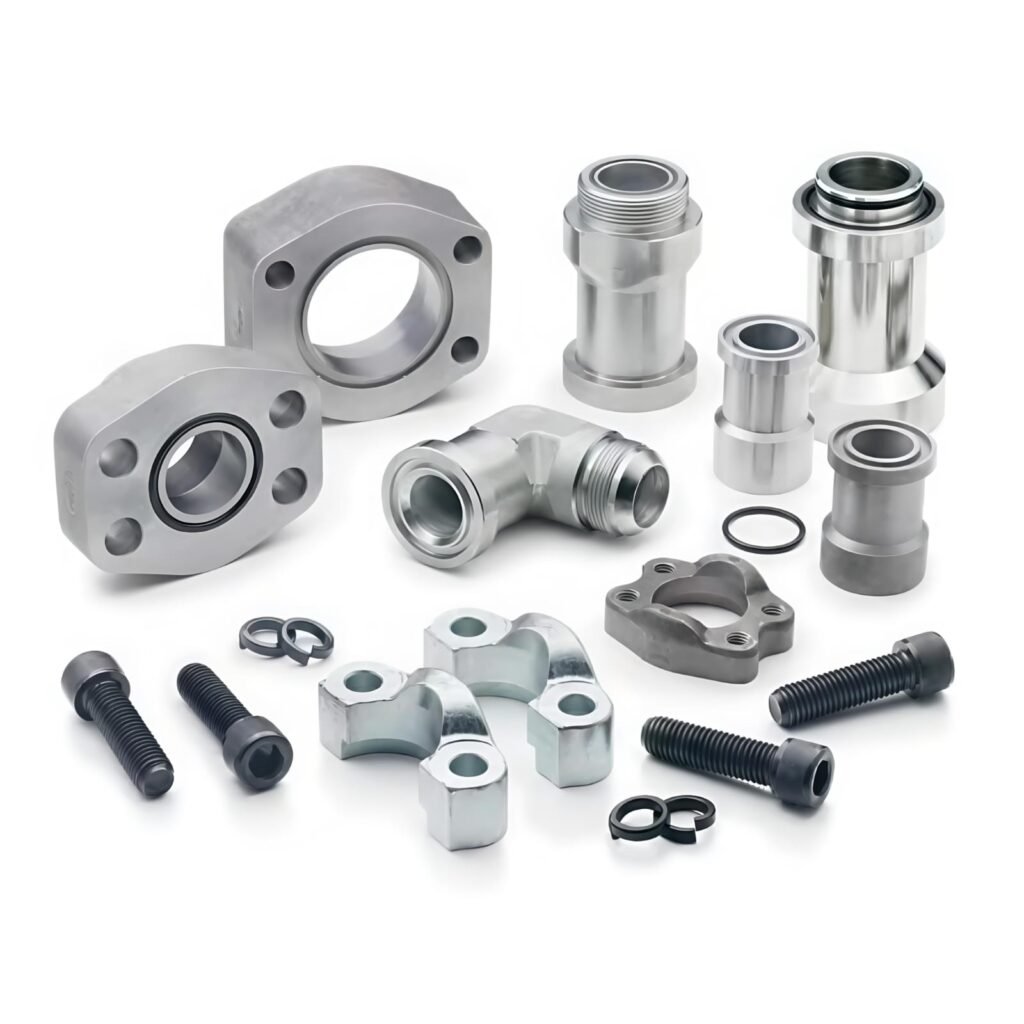SPLIT FLANGES & MONO FLANGES

Split Flanges
Split flanges are a type of hydraulic fitting designed for connecting pipes, tubes, and hoses in hydraulic systems. They are characterized by their two-piece construction, allowing for easy installation and removal around existing piping. The two halves are secured together with nuts and bolts, and an O-ring is used to create a tight seal, preventing leaks in high-pressure applications.
Key features of Split Flanges:
Easy installation and removal: | Ideal for maintenance and repairs, particularly in tight spaces. |
High-pressure capabilities: | Designed for use in hydraulic systems with high operating pressures. |
Reduced risk of leakage: | O-ring seal minimizes leaks and resists vibrations. |
Available in different sizes and materials: | Typically found in 3000 PSI and 6000 PSI versions (Code 61 and Code 62), and commonly made from carbon and stainless steel. |
Applications: | Primarily used in hydraulic and fluid power applications such as hydraulic machinery, mobile equipment, industrial machinery, aerospace, marine, agriculture, and oil & gas industries. |
Key features of Mono Flanges:
Compact design: | Integrates isolation and venting capabilities in a single unit, saving space and weight. |
Reduced leak points: | Fewer connections compared to traditional valve assemblies enhance system integrity. |
Isolation and Venting: | Include dedicated isolation and venting ports for precise control of fluid flow and pressure. |
Reduced vibration and stress: | Their compact design and reduced weight contribute to minimizing vibrations and stress on the system. |
Types of Monoflanges: | Can be configured as a single block, block and bleed, or double block and bleed (DBB) assemblies. |
Applications: | Widely used in industries like oil and gas, petrochemical, chemical processing, power generation, and water treatment, particularly in instrumentation systems and manifold applications. |
